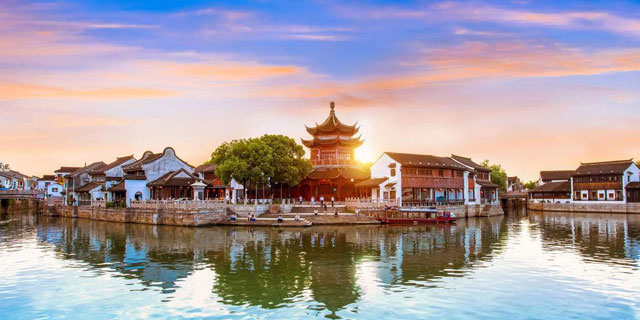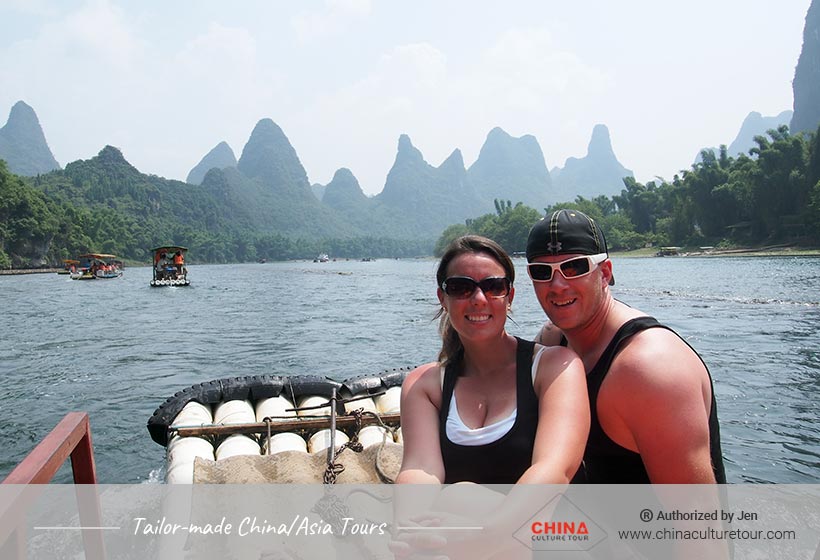20 Handy Facts To Explore the Best Local Eats in China
20 Handy Facts To Explore the Best Local Eats in China
Blog Article
Top 10 Tips For Local Specialties To Shop In China
1. Do your research before you goTip Find out what each region is famous for. For example, Suzhou for silk, Jingdezhen for porcelain, and Tibet for thangka paintings.
Pro: This tool helps you concentrate on your shopping goals and minimizes the amount of time wasted.
Con: You must be prepared and familiar with the highlights of the region.
2. Buy local to ensure authenticity
TIP: Buy products directly from the place of origin to ensure quality and authenticity.
Pro: Reduces the chance of copyright products and supports local artisans.
Con: Might require travel to rural or less touristy regions.
3. Take a look at the workshops or artists.
Shop in small boutiques or hubs of artisans instead of traditional stores.
Pro: This will give you a better understanding of the artwork and allows you to purchase directly from the creators.
Con: The price of handmade products is higher and it isn't easy to negotiate.
4. The cultural significance of language
Tip: Learn the cultural history behind items like jade carvings, cloisonne or scrolls of calligraphy.
Pros: You'll appreciate your purchases more, and they will have a a deeper meaning.
Pro Time: Takes time to understand the cultural nuances.
5. Verify the Quality
Check that the items you purchase, such as tea, ceramics or other products, meet your quality requirements.
Pro: You get what you have paid for.
Cons: Needs expertise or assistance to find top-quality products.
6. Beware of products that are mass-produced
You should seek out items that are original and handcrafted instead of mass-produced replicas.
Pro: You'll take home something that is truly unique and valuable.
Con The truth is that genuine craftsmanship can cost more and are difficult to locate.
7. Compare Prices
TIP: Try checking multiple stores or stalls to compare prices on the same item of interest.
Pro: It helps you to identify reasonable rates and prevents you from being overcharged.
Con: It can be time-consuming, especially in large markets.
8. Teas from trusted suppliers
Tip: In regions like Hangzhou or Fujian Visit reliable tea houses to purchase Longjing (Dragon Well) or Tieguanyin teas.
Pro: Ensures authenticity and high quality.
Cons: The cost of high-quality teas can be prohibitive for those who are brand new to the country.
9. Find out more about Local Customs
In certain regions there are certain regions where sellers are likely to demand that to negotiate.
Shopping with a unique twist is a great method to have fun.
Con: Not understanding how customs work can lead to awkward interactions.
10. Pack judiciously
Tip: Plan for the way you'll carry delicate or bulky regional specialty items like ceramics or silk back to your home.
Pro: Prevents damages and ensures that your purchase arrives in a safe manner.
Con: Increases logistical challenges and potential costs for shipping.
Pros of shopping for regional Specialties
Unique Souvenirs. Regional specialties provide unique products that are not available anywhere else.
Cultural Immersion: Shopping locally for specialty foods lets you be part of the history of the region and its craftsmanship.
Direct purchases from artisans help local economies.
The disadvantages of shopping for regional Specialties
Concerns about authenticity include the possibility of buying counterfeits or versions with lower quality.
Transporting fragile, heavy or bulky items can prove difficult.
Prices that are higher: Handmade products particularly they can be quite expensive.
With these suggestions You can shop with confidence for regional specialties, ensuring lasting and memorable purchases from your visit to China. View the best discover more about this attraction for blog recommendations including tours for the disabled, chinese furniture the development history of chinese furniture, snow beer the best selling beer in the world, xiang cuisine.html, xiang cuisine.html, datong beijing high speed railway schedule and timetable, entertainment in beijing, anren ancient town, shopping in shangri la, jiuzhaigou and more.
Top 10 Tips To Make Seasonal Visits To The Temples Of Fame In China
1. Visit during the off-season typically from November until January. There are fewer tourists and the temperature is cooler.
Pro: Less busy. Offers a peaceful and contemplative atmosphere.
Cons: It may be more cold and uncomfortable visiting temples in the cold.
2. Prepare yourself for extreme weather.
Tip: Temperatures may be extremely different in the various seasons. Winter can be very cold, and summers can be hot. Prepare for the weather.
Pros: Your stay will be relaxing and comfortable since you'll be well-prepared to deal with any weather.
Con Cons: Packing for seasonal extremes can be a hassle, particularly when you're traveling in a small amount.
3. Visits in Spring and the Summer to See Vibrant Flora
Tip : You can visit temples during the first days of spring, and also in summer. This is the time when you will find lush gardens, beautiful landscapes, and flowers all around.
Visit the temple grounds to enjoy beautiful scenery.
Con The summer months can be extremely hot and packed, especially during national holidays.
4. Consider Festivals & Special Events
Tip: Plan your visit during traditional celebrations like Chinese New Year (January/February) or the Mid-Autumn Festival (September). These times are filled with ceremonies, celebrations and the chance to see the temples' vibrant cultural activity.
Pro Temples are usually vibrant and full of traditional events, offering the most unique experience.
Con: During the festival season temples may become very packed and the cost of accommodation can increase.
5. Avoid Peak Holiday Seasons
Tips: Avoid visiting temples during peak tourist season, such as Chinese New Year and Golden Week (October), as they are likely to be crowded by foreign and local tourists.
Pro: More tranquil visits without the crowds, offering a more spiritual experience.
Con: You'll miss out some special festival activities in peak times.
6. Be sure to check for winter Temple closures.
Be sure to verify the time ahead. Certain temples, particularly in remote or northern areas, may only be open for a specific time or even closed completely during winter. Be sure to check before visiting.
It prevents you from making unnecessary trips, and lets you plan other activities.
Con The temples that are shut or have hours that are reduced could be disappointing.
7. Early Morning visits to Summer
Be sure to arrive early If you're visiting during summer to avoid the heat that occurs at midday. Many temples open their doors early in the morning. The atmosphere is calmer and there are fewer visitors.
Benefits You can enjoy an enviable, cooler and more peaceful environment without the noise of.
Con: It might not be for all.
8. Make sure you are prepared for rain in the summer months.
The summer season can bring a lot of rains, particularly in the south of China. Pack an umbrella and rain gear for your trip during this period.
It is still possible to appreciate the beauty of the temple, even when it rains.
Con: Rain could disrupt outdoor activities or make the temple grounds slippery.
9. In autumn, you can visit temples in mountainous regions.
Autumn leaves and mild weather makes it a perfect time to visit mountainous temples (e.g. Mount Wutai, Mount Emei).
Pros: The scenic views and cooler temperatures make outdoor exploration and hiking more enjoyable.
Con: Popular mountains temples can still attract crowds especially on weekends or during holidays.
10. Consider the Lunar Calendar in Specific Cases
TIP: Many temples use the lunar calendar in China Some rituals or events are tied to certain dates. It is crucial to verify the calendar in order to be able to attend important celebrations, like the Lantern Festival, Buddha’s Birthday or other temple ceremonies.
Pros: Discover distinct rituals and practices of the culture, as well as gain greater understanding of the local traditions of spirituality.
Cons: It can take more planning and time to match your travel dates to the lunar calendar.
Benefits of the experience of visiting Chinese temples during the Chinese season
Less crowds at the entrance: Visits during the off-season are quieter and more reflective.
Cultural Events: Festivals provide an understanding of local religions and cultures.
Beautiful Scenic Beauty: A visit during the seasons of spring and autumn may be awe-inspiring and stunning. There are also vibrant gardens that surround temples.
Cooler Weather: Autumn and winter provide cooler temperatures for temple exploration.
Pros and Cons of Visiting Chinese Temples during the season
Unpredictable weather: Winter could be extremely cold, and the summer is too hot. This could impact your ease of living.
Certain temples are closed during extreme weather or during off-season.
Afraid of crowds during festivals: The most popular festivals and holidays can attract huge crowds, making it difficult to fully appreciate the temple's tranquil atmosphere.
Limited Activities: If you are traveling outside of the time of the year, certain special events during the season may not be happening.
If you schedule your visit according to the season you will have a more memorable and enjoyable experience. Understanding the changing seasons will make sure you get the most out of your trip, whether you seek peace and tranquility or celebrations. See the best learn more about visiting here for more tips including tours for the disabled, entertainment in hong kong, shopping in dunhuang, shaoxing wine the best yellow wine in china, eating in changchun, snow beer the best selling beer in the world, four great classical novels.html, eating in zhengzhou, a wonderful landscape painting lijiang river, chinese knot which has a long history and a symbolic meaning and more.